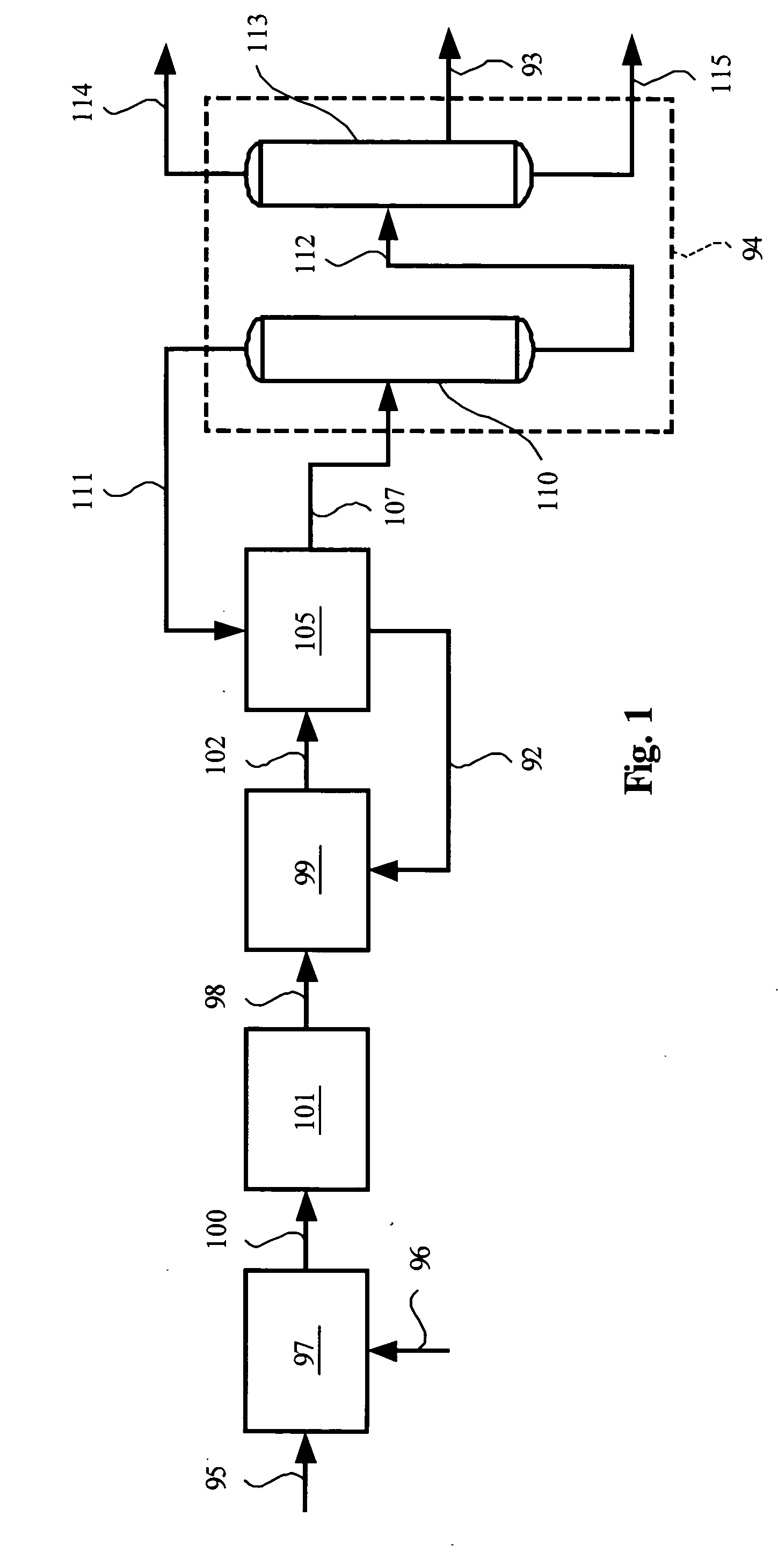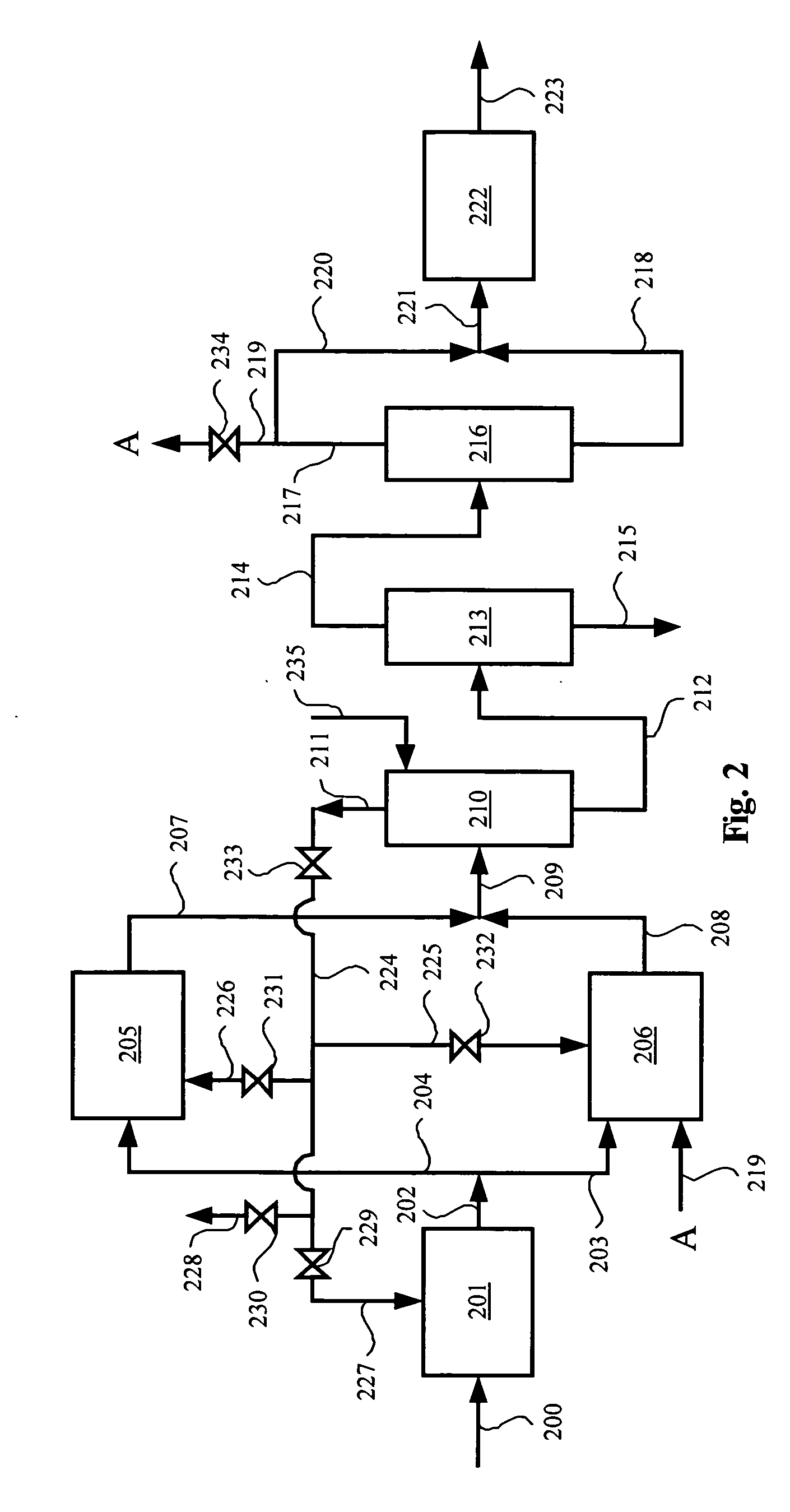Methanol and ethanol production for an oxygenate to olefin reaction system
a technology of oxygenate and olefin, which is applied in the field of process for forming light olefins, can solve the problems of unusable by-products and non-compliance with the use of additives
- Summary
- Abstract
- Description
- Claims
- Application Information
AI Technical Summary
Benefits of technology
Problems solved by technology
Method used
Image
Examples
example i (
Control)
Methanol as OTO Feedstock
[0195] In Example I, which is a control example, a feedstock comprising 99.5 weight percent methanol (˜0.5 weight percent water) was directed to an OTO microflow reactor for conversion thereof to light olefins. The resulting effluent stream was then analyzed to determine the amount of ethylene relative to propylene formed in the microflow reactor. The amounts of other products formed in the microflow reactor were also determined.
[0196] A SAPO-34 molecular sieve catalyst composition, designated catalyst composition “A”, was formulated following U.S. Pat. No. 6,440,894, the entirety of which is incorporated herein by reference. The silicon to aluminum atomic ratio of the as-synthesized SAPO-34 molecular sieve used to form the catalyst composition was determined to be 0.068 based on Inductively Coupled Plasma (ICP) spectroscopy analysis. The formulated catalyst composition had the following overall composition: 40 weight percent molecular sieve, 12 we...
example ii
9:1 Methanol to Ethanol Wt. Ratio in OTO Feedstock
[0204] In Example II, a feedstock comprising 90 weight percent methanol and 10 weight percent ethanol was directed to an OTO microflow reactor for conversion thereof to light olefins. The oxygenate-containing feed was introduced into the reactor containing Catalyst Composition A under the same conditions as indicated above for Example I (100 WHSV and 25 psig (175 kPag)). Unlike Example I, however, 9 to 15 runs were performed for each of the following reaction temperatures: 425° C., 450° C., 475° C. and 500° C. to determine what effect, if any, temperature had on conversion and selectivity of a mixed alcohol-containing feedstock to light olefins.
[0205] The resulting effluent stream was then analyzed in the manner described above in Example I to determine the amount of ethylene relative to propylene that was formed in the OTO reactor. The amounts of other products formed in the microflow reactor were also determined. The results of t...
example iii
8:2 Methanol to Ethanol Ratio in OTO Feedstock
[0208] In Example III, a feedstock comprising 80 weight percent methanol and 20 weight percent ethanol was directed to an OTO microflow reactor for conversion thereof to light olefins. The oxygenate-containing feed was introduced into the reactor containing Catalyst Composition A under the same conditions as indicated above for Example I (100 WHSV and 25 psig (175 kPag)). Unlike Example I, however, runs were performed for each of the following reaction temperatures: 450° C., 475° C. and 500° C. to determine what effect, if any, temperature had on conversion and selectivity of a mixed alcohol-containing feedstock to light olefins.
[0209] The resulting effluent stream was then analyzed in the manner described above in Example I to determine the amount of ethylene relative to propylene that was formed in the OTO reactor. The amounts of other products formed in the microflow reactor were also determined. The results of the analysis are indi...
PUM
| Property | Measurement | Unit |
|---|---|---|
| Temperature | aaaaa | aaaaa |
| Temperature | aaaaa | aaaaa |
| Temperature | aaaaa | aaaaa |
Abstract
Description
Claims
Application Information
 Login to View More
Login to View More - R&D
- Intellectual Property
- Life Sciences
- Materials
- Tech Scout
- Unparalleled Data Quality
- Higher Quality Content
- 60% Fewer Hallucinations
Browse by: Latest US Patents, China's latest patents, Technical Efficacy Thesaurus, Application Domain, Technology Topic, Popular Technical Reports.
© 2025 PatSnap. All rights reserved.Legal|Privacy policy|Modern Slavery Act Transparency Statement|Sitemap|About US| Contact US: help@patsnap.com



